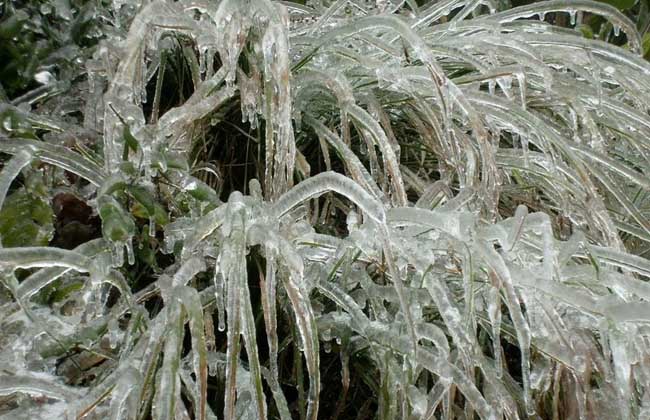What are the meteorological disasters in China?
Abstract: Meteorological disasters are the most frequent and serious natural disasters. In China, natural disasters occur frequently and there are many kinds of disasters in the world. Every year, due to droughts, floods, typhoons, rainstorms, hail and other disasters endanger the safety of people's lives and property, the national economy has also suffered great losses. Let's take a look at the meteorological disasters in our country.

Meteorological disasters are the most frequent and serious disasters among natural disasters. In China, natural disasters occur frequently and there are many kinds of disasters in the world. Every year, drought, flood, typhoon, rainstorm, hail and other disasters endanger people's lives and property, and the national economy has also suffered great losses. Let's take a look at the meteorological disasters in our country.
aridity
Drought is a disastrous weather phenomenon in which the precipitation is seriously insufficient in a long enough period of time, resulting in the loss of soil water due to evaporation and the decrease of river flow, which destroys the normal crop growth and human activities. The result is a reduction in the production of crops and fruit trees, difficulties in drinking water for people and livestock, and a lack of industrial water. Drought is the most serious meteorological disaster affecting China's agriculture, and the loss caused by drought is quite serious. According to statistics, the average annual drought area of crops in China is more than 300 million mu, the affected area is 120 million mu, the average annual yield reduction due to drought is 10 billion-15 billion kg, and the annual economic loss caused by water shortage amounts to 200 billion yuan. More than 420 cities in China have the problem of drought and water shortage, and there are 110 cities with serious water shortage. The annual output value of urban water shortage reaches 200 billion to 300 billion yuan.
Heavy rain
Torrential rain is a short-term or continuous process of heavy precipitation. In areas with low-lying terrain and blocked topography, Rain Water can not rapidly discharge, resulting in stagnant water in farmland and excessive soil water saturation, which will bring disasters to agriculture. It may even cause mountain torrents, river flooding, dyke breaches and great economic losses to the people and the country. China's meteorological department stipulates that rain with a precipitation of 50 millimeters or more in 24 hours is called "rainstorm". The Yangtze River basin is an area prone to rainstorms and floods, especially in the Lianghu basin and the Yangtze River Delta. Severe rainstorms and floods occurred in 1983, 1988, 1991, 1998 and 1999.
Typhoon
Typhoon is a general term for strong eddies with high central temperature and low pressure formed in the tropical marine atmosphere, which causes severe weather such as strong winds, torrential rains, huge waves and storm surges. The average annual loss caused by it is more than 10 billion yuan, such as "Yunna", which landed in Zhejiang in 2004, causing a loss of more than 10 billion yuan. In addition, the strong wind and heavy rainfall brought by "Taili", "Kanu" and "Brawan" also had a great impact on agriculture and fishery production. Among them, "Taili" affected 3.9,000 hectares of crops in 13 counties (districts and cities) of Fuzhou, Nanping, Sanming, Zhangzhou and Longyan in Fujian Province, and "Brawan" had the greatest impact on the northeast.
Low temperature
Low temperature freezing disasters are mainly agrometeorological disasters caused by continuous temperature drop caused by cold air and cold wave invasion, resulting in crop damage and yield reduction. In years with severe freezing injury, such as 1968, 1975 and 1982, the area of seed destruction caused by freezing injury was more than 20%. On October 25-29, 1977, a strong cold wave caused 0.5 meters of snow in Inner Mongolia, burying grasslands and killing a large number of livestock. In December 2011, a frost disaster occurred in northeastern Guangxi. In January 2012, there were two large-scale freezing weather of low temperature, rain and snow in the south. Rape and other crops and open-field vegetables suffered frost and frost damage. Rubber, coffee and bananas also suffered low temperature damage in some parts of southwestern Yunnan. The number of low temperature days in central and northern South China reached 5 to 9 days. Sugar cane and unharvested bananas showed mild to moderate cold damage, which caused potatoes to freeze and tomato fruits to crack. It also has a certain impact on some livestock and aquaculture.
High temperature
Due to the frequent occurrence of high temperature heat wave weather in recent years, the disaster caused by high temperature is becoming more and more serious. therefore, the meteorological department of our country has specially formulated high temperature early warning signal for the defense of high temperature weather. In the summer of 1994, there was a hot weather rarely seen in most parts of China since 1949. On June 24, the daily maximum temperature > 35 ℃ first appeared in Jiangnan and Huaibei. By July 11, the high temperature gradually spread to the middle and lower reaches of the Yangtze River and the Huaihe River basin. The highest temperature in many places in the south of the Yangtze River reached 3940 ℃, and the highest temperature area with the largest range and strongest intensity appeared from August 2 to 4. The local maximum temperature in eastern Sichuan and southwestern Hubei once reached 42 ℃. Abstract: Meteorological disasters are the most frequent and serious natural disasters. In China, natural disasters occur frequently and there are many kinds of disasters in the world. Every year, due to droughts, floods, typhoons, rainstorms, hail and other disasters endanger the safety of people's lives and property, the national economy has also suffered great losses. Let's take a look at the meteorological disasters in our country.
Snow disaster
A large amount of snow for a long time has caused a large-scale snow disaster, which seriously affects or even destroys lifeline projects such as transportation, communications and transmission lines, and has a great impact on people's production and life. In December 2005, Weihai and Yantai in Shandong Province suffered the biggest snowstorm in 40 years, which caused direct economic losses of 371.43 million yuan. In January 2008, southern China suffered a large-scale freezing rain and snow disaster rarely seen in history, with a large area of agriculture failing to harvest, power grids in some provinces and cities paralyzed, and the Beijing-Guangzhou artery was once interrupted. by the end of February, 129 people had died as a result of the disaster, 1.66 million people had been relocated urgently, and the direct economic loss exceeded 150 billion yuan. The snow and freezing disaster has such a wide scope, such a long time, and so serious harm that it can undoubtedly be listed as a major and typical "extreme climate event" in the world.
Wind and hail
Wind and hail disaster refers to the disaster caused by ice condensed in cumulonimbus clouds falling from the air under the control of convective weather. Hail often destroys large areas of crops and orchards, damages buildings and threatens human safety. It is a serious natural disaster, which usually occurs in summer and autumn. Wind and hail disasters occur in a wide area in China. According to statistics, the serious disaster area of agriculture due to wind and hail reached more than 99 million mu (1993), and the year of mild disaster also reached more than 56 million mu (1994).
Mountain torrents
Mountain torrents refer to the surge floods that occur in mountain streams and ditches. Mountain torrents have the characteristics of sudden occurrence, high concentrated flow velocity, strong erosion and destructive power, and carrying sediment and even stones in the flow, which often cause local floods, which are generally divided into rainstorm torrents, snowmelt torrents, glacial torrents and so on. In Dongdang Village, Pingshun County, Shanxi Province, China, a torrential rain fell on August 2-3, 1956, and mountain torrents broke out in the Langjiao ditch, which covers an area of only 1 km, resulting in the collapse of gully cliffs, blocking the gully and forming a natural reservoir, followed by a sudden collapse of the dam. 43 households, 92 people and 109 houses in the village were destroyed.
Thunderstorm
Thunderstorm means that some clouds with charged ions come into contact with other clouds with different charges, or the clouds with charged ions discharge rapidly between the earth, and the latter, that is, the clouds discharge to the earth. It will do great harm to buildings, human bodies, electronic equipment and so on. How to avoid the harm caused by discharge is the main object of human research. The energy of thunderstorms is very large, and the electricity emitted by thunderstorms of a few thousandths to tenths of a second can reach billions to hundreds of gigawatts at a temperature of 10,000 to 20,000 degrees Celsius.
Sandstorm
Sandstorm, also known as dust storm or dust storm, refers to the strong wind blowing dust and sand on the ground so that the air becomes very muddy, and the horizontal visibility is less than 1 kilometer. winter and spring are common in desert afternoons and dry pine land with long-term lack of rain. In many inland areas of northwest China, the number of sandstorm days is more than 30 days a year, but it is rare in the southeast.
Related
- A course of planting techniques and methods on how to grow carrots
- How to plant the latest tulips?
- Is it better to pick tea in the morning or in the afternoon? When is the best time for tea to be picked? what is the third or fifth tea?
- Launch Yuanxiao Happy combination Haocha + Tea Yuan healthy Taste
- Penghu Tourism "Fireworks 20 Parade with You"
- 2022 West Lake Happiness holds "Digital Revitalization Voucher" and draws iphone13 and laptop.
- Banqiao Fuzhou social houses are designed to change start-up combined with police elimination to create a safe and livable environment
- The convenient measure of "mechanical weeding" in Xinbei has been abused and the Agriculture Bureau has imposed heavy penalties on the illegal land consolidation.
- Changgeng University Joins Hands with Four Memory Factories to Rescue Memory Talent Shortage
- The list of Taiwan's top 100 MVP managers is listed by the Director-General of the Farmers' Association of Sanxia District.



